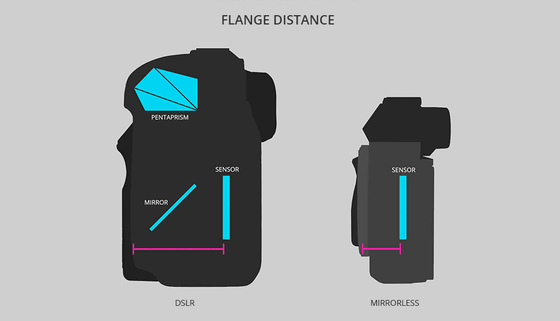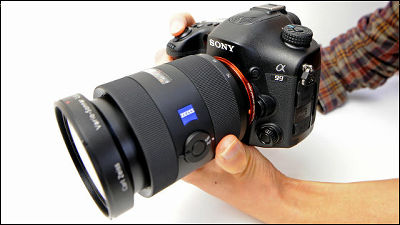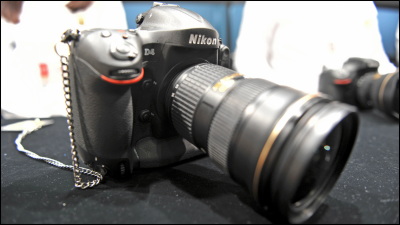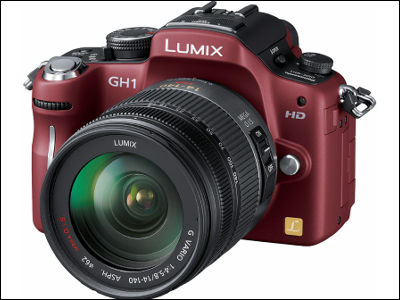Things to Know When Buying Mirror-less Cameras Foundation Guide

ByKārlis Dambrāns
Among digital cameras, "mirrorless camera" which does not equip the shutter part with a mirror is gaining popularity due to its compactness, ease of use, simplicity being evaluated. On the other hand, if you are still aiming for authentic factions, there is a composition called a mirror-type digital single lens, but in recent years the performance of mirrorless single lenses has been increasing more and more. Under such circumstances, what kind of mirrorless camera should be chosen, explained about such point by media "explora" which handles cameras, computers, audiovisual equipment.
Mirrorless Cameras: A Buying Guide | explora
https://www.bhphotovideo.com/explora/photography/buying-guide/mirrorless-cameras
First of all, from the difference between a mirrorless single-lens camera and a compact digital camera (CONDI). The feature of a mirrorless single-lens camera is where you can exchange lenses. Even if the camera is equipped with a zoom lens in the case of a condenser, what can still be photographed is limited. Even such a case, lens-interchangeable mirrorless cameras that can choose lenses according to the objects and the aimed image can expand the range of expression greatly, and even have the merit that their technique will be polished more and more by equipment.

In addition to the merit of exchanging lenses, it is expressive of "blur" by aperture adjustment. The following sample compares the extreme difference between the aperture value F / 0.9 and F / 11, but blurring appears in the background as the aperture value is small (= aperture is opened), and the subject can be well shown I will. On the other hand, if you squeeze it down to F / 11, you can shoot pictures to the background, but as a photograph, the atmosphere like a recorded picture also appears. Also, because the amount of light decreases, the overall brightness tends to fall.

Next, the difference between mirrorless single lens and digital single lens is shown. The merit of a mirrorless single lens is that the distance between the reference plane "flange" on which the sensor and the lens are mounted because the mirror itself does not exist is short. This means that in addition to lenses dedicated to mirrorless, there is a merit that a digital single lens can also be used. There is a big advantage of being able to make use of the so-called lens's asset, which has the advantage of being able to deal with old lenses, but also when you actually buy a lens, it is better to check compatibility Not even.

There are cases where you use "adapter" to install old lenses or lenses made by other companies, but in this case it is important to be aware that focus and aperture can not be set automatically.

The size of the sensor is as important as the lens. In general, a digital single-lens camera carries a so-called "full size" sensor, and the smallest class sensor is used for a condenser. In the case of a mirrorless single lens, sensors tending to be one size smaller than the full size tend to be used, and standards such as "APS - C" and "Micro Four Thirds" are commonly used. Some models use a full size sensor even with a mirrorless single lens, but as the sensor gets bigger as well the lens will also become bigger and the price will be up so much, so easy-to-use mirrorless one eye for 1 It seems that small size sensors are often used.

Comparing the specifications of sensors, it looks like this. Generally, the larger the sensor, the more light can be captured, which is said to be advantageous in terms of image quality.

In the case of a mirror-less single-lens reflex camera, it is necessary to take into consideration how the appearance of the viewfinder changes greatly. In the case of mirror type cameras, it is a mechanism to see the actual landscape through mirrors and lenses, but in the case of a mirrorless single lens without a mirror, an EVF (Electronic ViewFinder) that electronically displays images is mounted It is. EVF has advantages and disadvantages. One of them is that the temporal time lag occurs in the image seen as an actual object, which may cause the timing of shooting to be removed. However, as technology development progresses, the problem of time lag is being solved, and there are things that the influence is hardly understood if it becomes a high function model.

On the contrary, the merit of EVF is that it can add a function not found in the mirror type viewfinder. One of them is to highlight the focused area as follows. This makes it possible for the photographer to reliably determine where the focus is in, so it is possible to shoot more reliably. Besides this, the function to display on the screen that the exposure is too bright and that "white jumping" is occurring is one of useful functions.

Focusing There is also a difference in the mechanism of auto focus (AF). A digital single lens with a mirror uses a "phase difference detection method" that recognizes the distance to an object using a sensor dedicated to AF. With this mechanism, it is possible to detect the direction and the amount of focus shift, and it is possible to instantly determine in which direction the focus should be moved and achieve high speed AF performance.

In the case of one mirrorless single lens, it is impossible to mount AF dedicated sensor because there is no mirror. So we came up with AF technology of "contrast detection method" that determines focus by detecting image sharpness and contrast. However, since this method does not know "which way you are out of the way" like the phase difference detection method, the camera moves the lens in both directions to explore the focus. Therefore, there is a disadvantage that AF takes time. It is also inevitable for this method that the accuracy in the dark is reduced. However, in recent years, what is called "Hybrid AF" combining both methods has also appeared, and there are cases where AF performance is greatly improved.

With regard to the movie shooting function, it seems that digital single lens and mirrorless single lenses are almost equal. In the past, Mirrorless Single Eye was also focusing on movie shooting, there was also an atmosphere called "Photos only" for Digital SLR, but since digital single lenses of recent years have become able to shoot movies of the same level , There is no big difference between the two. There are many models that support shooting with 4K quality in both cases, but again the difference in sensors becomes important as well. If you are looking for image quality, the sensor has never been over, so if you can choose as large a sensor as possible, you can shoot a beautiful movie. Speaking of AF performance, it is said that the mirrorless single eye using the contrast detection method that can constantly monitor the degree of focus always has the property that it can follow changes more quickly.

The presence or absence of the Wi-Fi function is also becoming important when choosing a camera. The ability to wirelessly transfer photographed photos to smartphones etc. without having to insert or remove the media is convenient and the action of "taking photos taken with full-fledged cameras to SNS", which took time in the past, , You can easily do it by using Wi-Fi.

Based on the above, if you choose a mirrorless type camera, it will be advice as follows. Although the mirrorless machine of the consumer machine (entry class) can be used easily, there are many models in which the viewfinder is omitted and only the rear display is made, and there are disadvantages such as the sensor is smaller than the upper model. However, there is also a merit that the price is cheap correspondingly, so it is likely that the area around this place is still a lot of balance.

The proshuomer machine (semi-pro machine) can be said to be the most suitable model when shifting from the conventional digital single lens. In general, it has a slightly more compact body than a digital single lens, and you can begin to use it without discomfort in order to properly mount the viewfinder. Also, since sensors are also used at a necessary and sufficient level, it is also important to not carry a big handicap on image quality. Between the pro machine and the introductory machine, the most balanced one seems to be said to be a pro shoemaker machine adopting the APS - C standard and micro Four Thirds standard.

Once you become a professional, the performance will become "price-oriented" again. With a full-size sensor, it has a strong body that can withstand heavy use, weather resistance, a high-speed processor and a buffer memory that keeps data temporarily in continuous shooting It is this class to attach. Also, it is well thought out that this class of cameras is able to answer professional needs, such as being able to set very detailed details of the function setting items and reachable itchy contents It is a privilege to have.

Cameras are also one of the tools, so it is still inevitable that the price is roughly proportional to the performance. After all, it may be said that it is also a real pleasure to understand the mechanism and characteristics of the tool correctly and to select the most suitable one for the balance between your needs and budget.
Related Posts:
in Hardware, Posted by darkhorse_log







